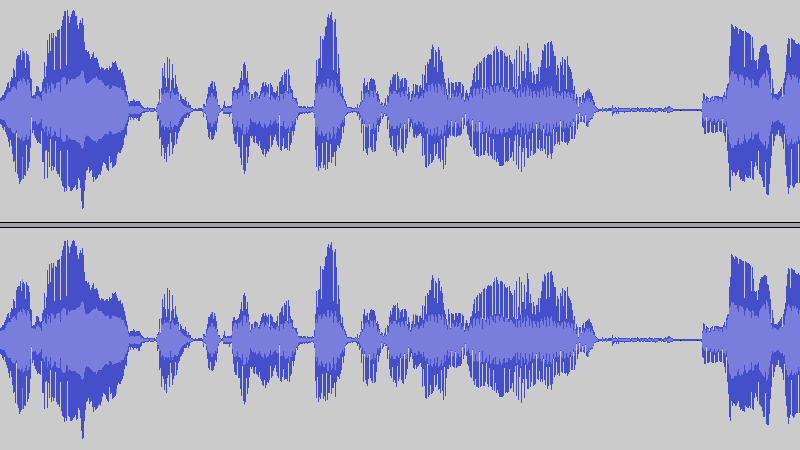Part 3: Coarse Edit

Listening back to the audio and making notes
If you’re looking for an audio editor, Audacity is free, open-source and works well. For editing I use Ableton Live which is a commercial product with more tools that make manipulating sound easier.
Before making any edits I listen back to the entire recording to get a feel for which bits stand out and which don’t. One of the big challenge of audio editing is that you have no way of visualising the content of the interview. Effectively all your editor is showing you is the volume of the recording at different times, but there’s nothing to say for example that at 2 minutes 45 seconds we started talking about their science.
You could type out an entire transcript of the interview – this is an incredibly arduous and lengthy task. However this gives you the most information about the content of the audio you’ve recorded, and allows you to easily select which areas of the interview go well together. I don’t have the time to transcribe every recording in full detail, so I playback the recording as a slightly slower speed. As I listen I have a blank text document open and type quick notes on what is being said. I put asterisks next to bits I really like and want to prioritise for inclusion.
Identifying the sections
From my notes I identify the start and end points of different sections of the interview - points where we move on to another questions/topic, etc. I start to split the audio file at these points.
I’m also looking for my favourite part of the interview – this will be something that’s quirky, surprising, or heart-felt that immediately grabs the listener’s attention.
Arranging the sections - format

The format I developed for the CiW interviews features a cold open i.e. it jumps straight into the action before anything else. This is deliberate – the edited audio is only around 120 seconds long – I don’t want a significant proportion of that time taken up by some repetitive pre-recorded message.
The majority of the listeners will be arriving directly at the audio from the CiW website – they already know the context. When I share interviews via the Scientists not the Science podcast feed, where the context isn’t obvious, I add a short introduction tailored explicitly to to that audience:
I was also keen to cut out the interviewer from the clips, to keep focus on the interviewee and due to the limited amount of time available. This makes editing more challenging, as the context needs to be clear from what the guest is saying, but with careful editing and phrasing of questions I’ve not really had too many problems putting an edit together.
After the cold-open the interviewee introduces themselves: ‘My name is …. , I am a …. at the University of ….’. Most interviewees will say this automatically if you ask them introduce themselves. Some will forget to say what they do or where they’re from, and if they do I prompt them at the end of the interview to introduce themselves again with the missing information included.
Next I usually include a 20-30 seconds of the guest talking about their research. As a scientist I am always tempted to include loads of hardcore science – because it interests me. However this doesn’t fit with the purpose of the CiW interviews – they’re not to teach people science, nor even for people to learn in detail what each interviewee does, but aim to present inspiring role models.
After this the format focuses on the guest’s story – their pathway, inspiration and motivation. These are the parts of the interview that I feel resonate well with a wider audience, as people are often describing their feelings and emotions.
Some sections will be boring, for example they might be too niche to a guest’s individual circumstances and not relevant to a wider audience. These sections are cut. This is not to say they aren’t important to the interviewee, but if they don’t support the purpose of the interview, they’re gone.
End voiceover
At the end of each interview I also include a short piece of narration: ‘To hear more scientist profiles search online for Cavendish inspiring Women’. This is a concession to the fact that while most listeners will arrive at the recording via the website, the relative ease of sharing and posting content in other locations mean that I want to ensure the origin of the audio can be identified if it ends up adrift on the web. The choice of words was specific – there is deliberately no mention of the website address, as this is tricky to spell – a quick search will find the website much more easily.